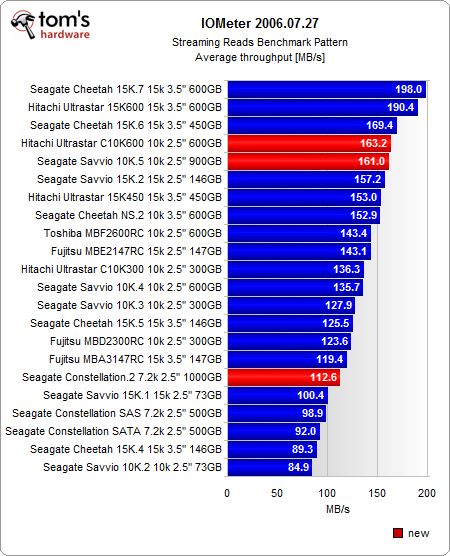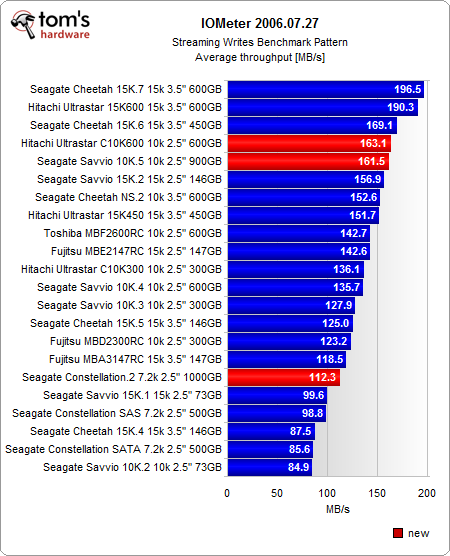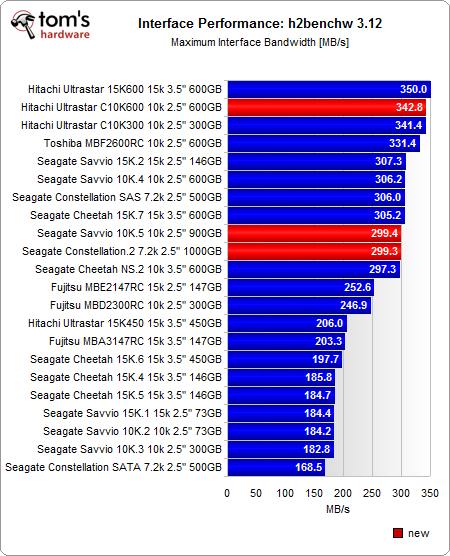Three 2.5" SAS Drives: Enterprise Data Giants, Compared
Currently, 2.5" enterprise drives are leaving their 3.5” competitors behind. They're faster, more flexible, and now they offer comparable capacities (we're up to 1 TB now). In this piece, it's Hitachi versus Seagate battling for high-density supremacy.
Benchmark Results: Throughput
In the h2benchw 3.13 benchmark, Hitachi's Ultrastar C10K600 takes first place in both reading and writing with 139.4 MB/s. The Seagate Savvio 10K.5 is a close second with an average speed of about 132 MB/s and a maximum peak throughput of 170.4 MB/s, which is even faster than the Hitachi drive. Seagate's Constellation.2 only runs at 7200 RPM as opposed to 10 000 RPM, and is therefore clearly behind in read and write speeds. It reaches an average of 91 MB/s.
The Hitachi Ultrastar C10K600 and Seagate Savvio 10K.5 go head-to-head; the Seagate Constellation.2 is a bit slower, as confirmed by the Iometer readings.
Get Tom's Hardware's best news and in-depth reviews, straight to your inbox.
Current page: Benchmark Results: Throughput
Prev Page Comparison Table, Test Configuration, And Transfer Diagrams Next Page Benchmark Results: Access Time And I/O Performance-
compton Toms with some more review niceness. Thanks for another interesting article. I don't think mechanical storage is going anywhere soon. For better and worse we'll still have it around for a long, long time to come. Even when SSDs hit that magical speed/capacity/cost point to be ubiquitous for mainstream consumers, enterprises will still need HDDs as part of their storage needs. HDDs are at least a known quantity that are still getting better.Reply -
bit_user 3rd paragraph: "have to be taken into considered". You also didn't mention capacity and cost/GB, where mechanical disks still reign supreme.Reply
Also, why not benchmark a 3.5" disk, but only use the outer portion. If both that and a 2.5" have the same density and rotational velocity, then the 3.5" should win due to higher I/O speeds resulting from higher linear velocity.




